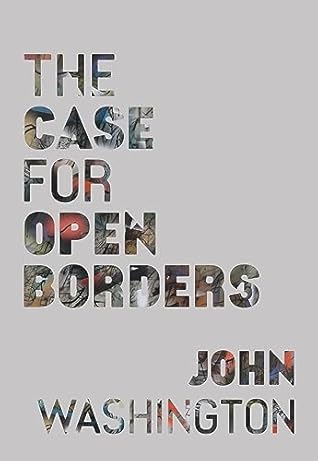More on this book
Kindle Notes & Highlights
That the force of the border could have blinded me to that glaringly obvious and simple truth reveals, in turn, something else: its tentacles had me so tightly gripped that I couldn’t see its power. “Walls cut deep into us,” writes political philosopher Wendy Brown, “into our psyche, our souls.” And I know, too, that I don’t want something so deep inside me that so profoundly alters—that so poisons—who I am and how I am toward other people.
Migrants aren’t passive victims of global crises, nor are they swept—or drowned—by political tides. On the contrary, migrants are active and dynamic agents who affect and determine their life paths, choosing—albeit often under strained or precarious circumstances—to seek safety and opportunity, subverting, as they do so, systems of apartheid and inequality. They actively resist global regimes meant to exploit, deny, and immobilize them. They should be welcomed, dignified as they are, and respected. Opening borders doesn’t give migrants a chance at life (since migrants find and make life where
...more
The wall that day when Abu Yassin couldn’t find warmth for his daughter, the wall that Turkey was defending with support of the European Union and the United States, was not impermeable. Others could pass. Turks could cross the wall in either direction. Foreign dignitaries, American citizens, Germans, reporters, anyone with enough luck to be gifted the proper passport could pass, flash their papers and cross, and cross again—they could do a triumphantly slow two-step back and forth to the rhythm of their national anthem: Syria to Turkey, Turkey to Syria, back and again. But anybody born in
...more
Another gaping blind spot in liberal thinking about borders is the presumption of who already belongs in the community. Walzer writes about membership: “We don’t distribute it among ourselves; it is already ours. We give it out to strangers.” But how is it “already ours”? Why does Walzer get to count himself amongst those who have the authority to bestow—or not—that invitation? The manner in which most populations have gained the ability to exercise such self-determination is by violently wresting it from others, namely Indigenous peoples.
What happened afterward followed the same illogic: they did all they could to stop select others from being able to cross into what they now considered their land. While the justification for that near-simultaneous mobility and denial of mobility can basically be boiled down to a tautological “because we say so,” it’s important and, indeed, illuminating, to dissect the legal and philosophical sinews of that tautology.
The settlers thought that Natives hadn’t put the land to agricultural use because they didn’t recognize, or simply didn’t understand or ignored, non-European agricultural techniques.
“Frontiers are established by power,” writes historian Elie Kedourie in Nationalism, “and maintained by the constant and known readiness to defend them by arms.”
From 2005 to 2014, the study found that the US refugee and asylee population paid $63 billion more in taxes than they received in benefits. And the per capita annual net effect of each refugee or asylee was positive by $2,205, compared to a national average of $1,848 over the same time period.
The warming globe is both exposing and exacerbating existing inequalities, deepening what journalist David Wallace-Wells has called the “climate caste system.” Poorer countries, though they have emitted only a fraction of the greenhouse gases that richer countries have spewed, are suffering the worst of worsening weather. That’s because, in part, more of the poor countries are in the tropical areas—already hot to begin with—where climate change will make life harder to live and crops much harder to grow. A lot of these nations also have extensive coastlines, which make them especially
...more
A 2021 report from the Transnational Institute calculated that seven countries (the United States, Germany, Japan, the United Kingdom, Canada, France, and Australia)—together responsible for 48 percent of the world’s historic greenhouse gas emissions—“collectively spent at least twice as much on border and immigration enforcement (more than $33.1 billion) as on climate finance ($14.4 billion) between 2013 and 2018.”
A 2017 study from the Center for Biological Diversity found that wall construction along the US–Mexico border is having “disastrous impacts on our most vulnerable wildlife,” including ninety-three threatened species put at risk of extinction due to ongoing wall construction. The imperiled animals include jaguars, jaguarundi, Quino checkerspot butterflies, arroyo toads, California red-legged frogs, black-spotted newts, Pacific pond turtles, and Mexican gray wolves. Another of the endangered species, the cactus ferruginous pygmy owl, are low flyers and can’t make it over the border wall; their
...more
Abolition of ICE’s immigration-enforcement duties, and the assignment of all ICE agents to their other tasks—such as stopping child pornography—would be a much better use of agents’ time and public resources. The proposal to sever ICE’s immigration-enforcement duties from the rest of the work has been repeatedly made by ICE agents themselves, as the agents working in the investigative units don’t like the politicization or stigma its immigration work brings them: they say their jobs are harder because people don’t trust them. As it turns out, you run a reputation when you’re known for stalking
...more
How do we take down the walls? A bulldozer can follow the passage of a bill. Or the reverse: the heart can follow the hand.


